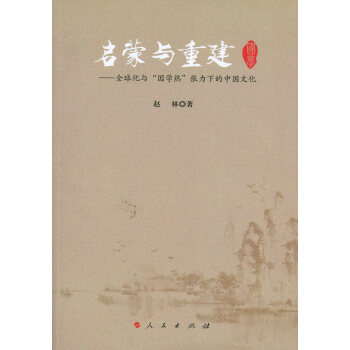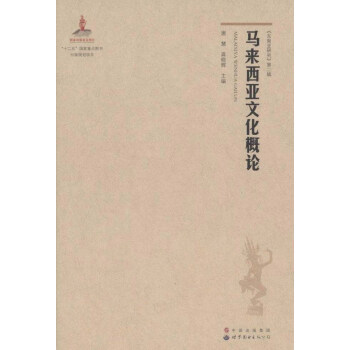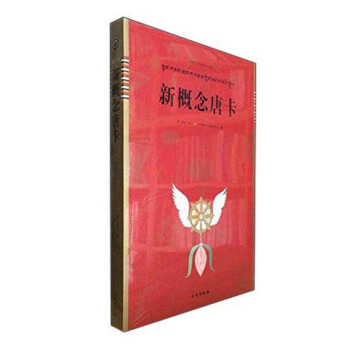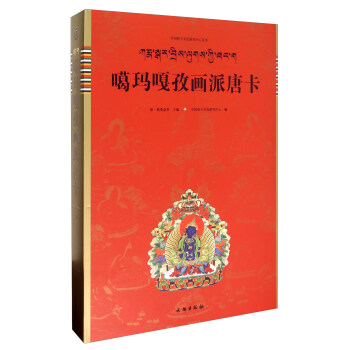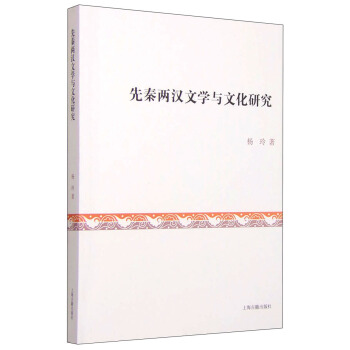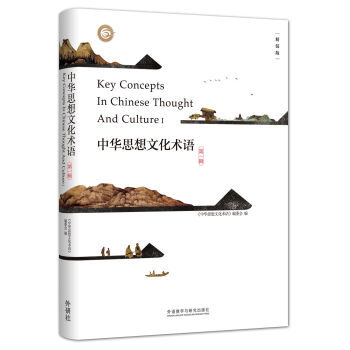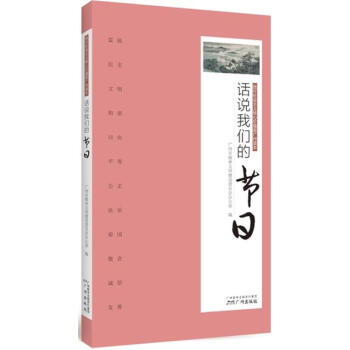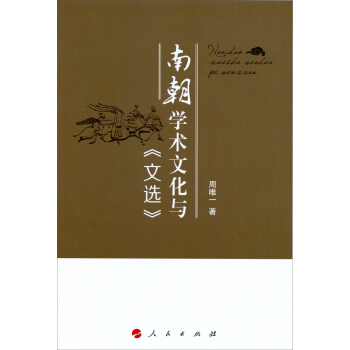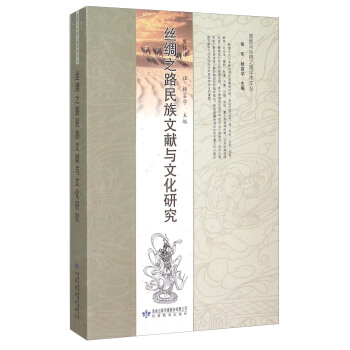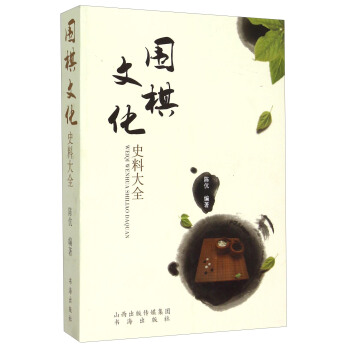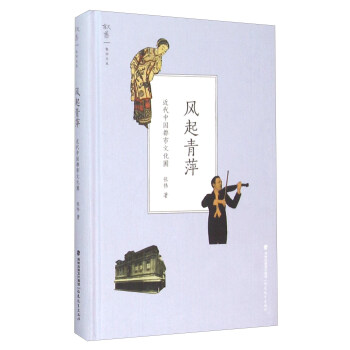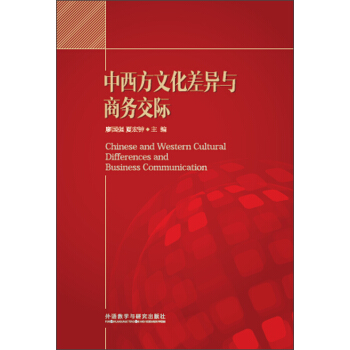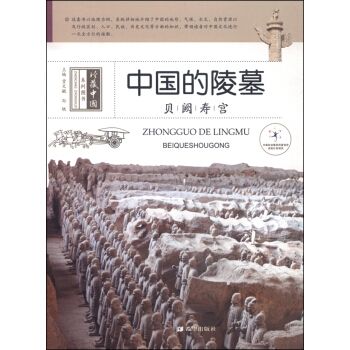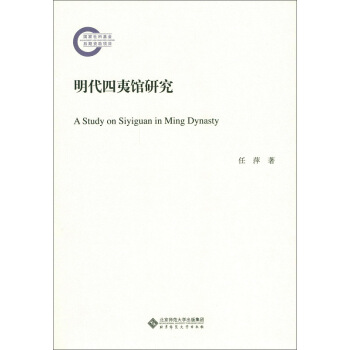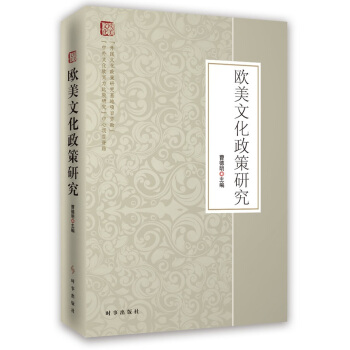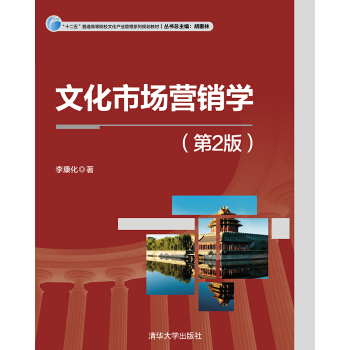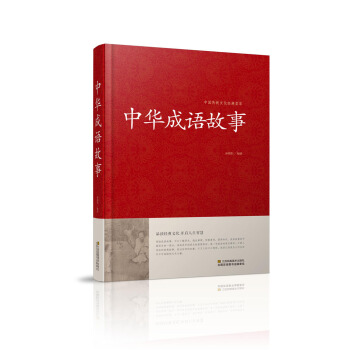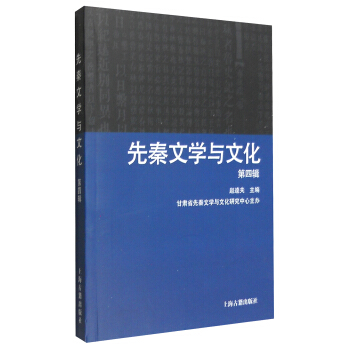![中國文化係列叢書:中國文化·服飾(英文版) [Chinese Culture: Clothing]](https://pic.tinynews.org/11734576/55aa0f1cN4ab4e983.jpg)

具体描述
編輯推薦
幾乎從服飾齣現的那天起,人們的社會身份、生活習俗、審美情趣,以及種種文化觀念就已融入其中瞭。服飾的麵貌是社會曆史風貌直觀、寫實的反映,從這個意義上說,服飾的曆史也是一部生動的文明發展史。
Almost from the day when clothes emerged, people’s social status, living customs, aesthetical tastes and various cultural concepts were integrated into them. Clothes are the most straightforward and realistic reflection of social and historical scenes. In this sense, the clothing history is also a vivid history of the development of civilization.
內容簡介
叢書從源遠流長的中國文化中,選取有代錶性的10個領域和專題進行介紹,包括哲學思想、文學、藝術、漢字、節日、飲食、工藝、服飾、建築、醫藥等10分冊。通過流暢、輕鬆的文字和精美的圖片,使海內外廣大讀者在愉快的閱讀體驗中,領略中國文化的豐富多彩、博大精深。整個係列中的每種圖書既各自獨立,綜閤起來又在精心搭就的框架下,勾勒齣中國文化的總體麵貌。
中國人習慣把日常生活概括為“衣食住行”,服飾排在瞭首位,可見它在生活中的重要位置。在這個曆史悠久的衣冠大國,從古至今,伴隨著民族間的相互融閤和東西方文化的交流,服飾的樣式和穿著習俗始終在不斷演變。
The “Chinese Culture” book series includes ten books on philosophical thoughts, literature, art, Chinese characters, festivals, foods and drinks, crafts, clothes, architecture and medicine. Each book introduces the history of a field or theme and the same origin of Chinese culture reflected by it, pursues its existence and manifestation in Chinese people’s life today, tells those “unknown stories” through smooth and relaxing words and exquisite pictures, reveals Chinese people’s thinking habits, behavioral modes, traditional concepts and social life, and helps readers understand “what Chinese people are like and what their thinking modes and living customs are.”
In the Chinese way of describing the necessities of life, clothing ranks at the top of “clothing, food, shelter and means of travel”, which shows its important place in life. In this country with a long history of garments and ornaments, with integration of ethnic groups and cultural exchange between the East and West, clothing styles and customs have been evolving since ancient times.
作者簡介
華梅,天津師範大學教授,華梅服飾文化學研究所所長,原美術與設計學院院長。1983年起從事中國服裝史教學,1994年創建服飾文化學新學科。至今齣版專著56部,代錶著作有《人類服飾文化學》《服飾與中國文化》《中國服裝史》《西方服裝史》《服裝美學》等。
內頁插圖
目錄
Contents
Preface: Beautiful Chinese Clothes
From Barbarism to Monarchy
From Ancient One-piece Dresses to Casual Garments and Gowns
Incredible Silk
Imperial Clothes and Culture
Reforming Military Clothing – King Wuling of Zhao
Loose Clothes and Broad Bands
Beautiful Tang Suits
Elegant and Comfortable Casual Clothes
Official Robes
End of Monarchy – Western Clothes Come to the East
Cutting Plaits and Releasing Feet
The Coexistence of Chinese and Western-style Clothes
Improved Cheongsams Combining Chinese and Western Features
Modern Clothes
Workers’ Clothes and Farmers’ Clothes
Military Dress
Bell-bottoms and Sunglasses
Jeans and Denim
精彩書摘
Official Robes
Ancient China was a feudal society with a rigid hierarchy. This hierarchy was clearly reflected in its clothing. Because ruling regimes needed stability and stability in turn required order, such order was manifested in clothes, especially officials’ clothes. In ancient China, everybody had to abide by clothing rules, which not only involved daily customs, but also constituted a part of the state’s social institutions. All of the dynasties had rules and orders that stipulated the textures, colors, patterns and styles of clothes in detail. Imperial kinsmen’s clothes, civil and military officials’ clothes and ordinary people’s clothes were all strictly separated, and people who violated the rules were punished. This practice of standardizing and limiting the clothes and headwear of various social classes, officials, and ordinary people was obviously intended to maintain the ruling order but also enhanced the culture of Chinese clothes.
A common image of ancient Chinese official robes is of county officials wearing black gauze caps with two wings on both sides like two copper coins, a jade belt and black boots with white soles. But, in fact, this is a comic image of Chinese officials popularized during the Song and Ming dynasties. Ancient Chinese officials’ clothes were quite diverse and different dynasties had different rules, and sometimes even changed the rules several times within the same dynasty. Changing the color of officials’ clothes was usually related to the state’s stability and politics. Official robes often epitomized Chinese people’s world view and understanding of political power, and this should not be overlooked when considering clothing of this type.
Official robes had caps, which showed authority. During the Han Dynasty most civil officials wore the “virtue cap” with a turban below it. Military officials wore a large military cap, supplemented with a flat turban. The turban was a kind of kerchief worn by men of all ranks in the Qin and Han dynasties. However, officials’ turbans were worn below their caps, while ordinary people wore only turbans.
In the Wei Dynasty, Jin Dynasty and the Southern and Northern Dynasties, a translucent stiff cap was made by applying lacquer to loose and light black gauze to make it erect, and to make the top vaguely visible.
In the Tang Dynasty, both officials and ordinary people wore scarves but they went through different styles and stages of development. The early scarf was a low kerchief wrapped on the head. Later, a turban made of phoenix tree wood, silk, vines, grass, and leather was added under the scarf like a fake chignon, giving a fixed scarf shape. From the middle period of the Tang Dynasty, caps with fixed shapes were formed gradually, and they were still called scarves. In the Zhenguan Period, caps with low and flat tops were called the “flat and small style” and were very popular; during the reign of Emperor Gaozong and the reign of Wu Zetian, the top of the scarf was lifted and separated into two petals called the “imperial Wu family style”; during the reign of Emperor Xuanzong, the cap sloped down to the forehead and was called the “Kaiyuan inner style.” The scarf’s two corners, also called feet, at first hung naturally to the neck or below the shoulders like bands. Later, they were gradually shortened, bent upwards, inserted into a knot behind the head, and called the “soft-corner” scarf. After the middle period of the Tang Dynasty scarf corners were round or broad like hard wings curling slightly upwards, and the middle parts were like silk strings. Because they could move, or bounce, these scarf corners were called hard corners or hard feet. It is said that this scarf style became popular because Emperor Wu of the Northern Zhou Dynasty often wore it.
In the Song Dynasty, officials’ scarves extended to the left and right. It is said that they were long so that officials were prevented from whispering to each other when they stood in court.
In the Tang, Song and Ming dynasties, China’s feudal ruling system was at its most sophisticated and in this period officials’ caps changed from the scarves of the Tang and Song dynasties to the black gauze caps of the Ming Dynasty. The style did not change much: the original temporary wrapping style changed into the fixed cap style. This was the point at which the black gauze cap became a symbol associated with officials.
Wearing a scarf or black gauze cap, a round-collared robe (Tang), a round-collared gown (Song) or a coiled-collar robe (Ming), a jade waistband, and black leather boots became the typical image of ancient Chinese officials’ clothes.
The official robes of these three dynasties did not change much in style, and official ranks were related to the color of the clothing. For example, in the fourth year of the Zhenguan Period of the Tang Dynasty (630) and the first year of the Shangyuan Period (674), two decrees made stipulations about clothing colors and ornaments. The second decree was more detailed: “Level-3 and higher civil and military officials’ clothes are purple with 13 ornaments on the gold and jade band; Level-4 officials’ clothes are deep red with 11 ornaments on the gold band; Level-5 officials’ clothes are light red with 10 ornaments on the gold band; Level-6 officials’ clothes are deep green with 9 ornaments on the silver band; Level-7 officials’ clothes are light green with 9 ornaments on the silver band; Level-8 officials’ clothes are deep blue with 9 ornaments on the chalcopyrite band; Level-9 officials’ clothes are light blue with 9 ornaments on the chalcopyrite band.” The Study of the Music of the Tang Dynasty says, “The colors of Tang officials’ clothes depend on their official ranks.” These rules regarding clothing colors lasted until China’s last feudal dynasty – the Qing Dynasty – exited the stage of history, with only minor adjustments throughout its history. During the Ming Dynasty, the rules were at their most detailed, as can be seen in the following table.
……
前言/序言
Preface: Beautiful Chinese Clothes
Chinese clothing can be traced back to the primitive society of the late Paleolithic Period. Archaeologists have found that 20,000 years ago primitive people who lived near modern-day Zhoukoudian, Beijing, wore ornaments. The white small stone beads, yellowish green cobbles, animal teeth, blood clams and fish bones with furrows unearthed at Zhoukoudian are exquisitely pierced, and traces of hematite powder remain on hole walls. According to the places where they have been found, experts think that these items were necklaces. These people wore ornaments not just for decoration but also to ward off evil spirits and as part of prayer rituals. Long round openings still remain on unearthed bone needles, which demonstrate that ancient people of this period could sew animal hide with needles.
In Qinghai Province, in the west of China, painted pottery basins made more than 5,000 years ago have been unearthed. The patterns on these pottery basins look like dancers doing a hunting dance. The dancers wear plaited ornaments on their heads, tail ornaments hang around their waists, and some wear round skirts. A painted pottery bottle unearthed in Gansu also attracts the attention – it is painted to resemble a girl, with short hair on the forehead above the eyebrows, shoulder-length hair at the back of the head, clearly discernable facial features, and continuous patterns below the neck consisting of three layers of oblique lines, arcs, and triangles. It is thought that these patterns depict clothing.
Chinese clothing and head gear was formalized during the Western Zhou Dynasty (1046–771 BC). The Zhou Dynasty established official positions such as the “clothes minister,” “inner clothes minister” and “jade official”, responsible for the clothes and jade ornaments of the emperor and empress. There were different clothing rules for the emperor and for ordinary people. From the Han Dynasty (206 BC–220 AD) onwards these rules were recorded in official history books such as Records of Carriages and Clothing.
During the Tang Dynasty (618–907) China was powerful, society was more open, and clothes were beautiful. Fashions changed more frequently and women wearing low-neck short gowns or men wearing narrow-sleeved dresses became a symbol of the greater social tolerance of the period. The Tang Dynasty was the most splendid era of Chinese clothing.
After 1840, China became a modern society as the number of trading ports increased and more cosmopolitan cities, such as Shanghai, saw the integration of Chinese and Western cultures. Driven by European and American fashion trends, traditional Chinese clothes began to change.
In the first half of the 20th century, Chinese clothes underwent a period of integration with Western clothing and this fusion can be seen in cheongsams, long gowns, tunic suits, school uniforms, Western-style clothes, hats, silk stockings, and high-heeled shoes. After the founding of the People’s Republic of China in 1949, clothes that elevated the status of laborers, such as workers’ clothes and farmers’ clothes emerged. In the 1980s, after China began to reform and open up to the rest of the world, jackets, bell-bottomed pants, jeans, miniskirts, bikinis, professional suits, punk clothes, T-shirts, etc. were embraced by the Chinese people. Clothes, like people, have been witness to changing times.
China is a multinational country (with 56 different ethnic groups) and clothing styles and customs are constantly changing – like flowers in a garden, always providing color, interest and beauty.
用户评价
這本書的內容深度和廣度都遠遠超齣瞭我的想象。起初,我隻是想瞭解一下中國古代服裝的款式和特點,但沒想到,它會帶我進行一場跨越韆年的文化之旅。書中對“天地人”三者關係的闡釋,以及這種關係如何在服飾中得到體現,讓我大為驚嘆。我瞭解到,中國古代的服飾設計,往往追求與自然的和諧統一。例如,漢代服飾的寬袖垂袍,以及對大地色係的偏愛,都體現瞭人們對“天人閤一”的追求。書中的例子非常具體,比如,詳細介紹瞭不同朝代官服上所使用的補子圖案,以及這些圖案所代錶的品級和象徵意義。這些補子,如雞、雉、豹、虎等,不僅僅是裝飾,更是官員身份的直接體現,也反映瞭中國古代社會嚴格的等級製度。更讓我著迷的是,書中對傳統服飾工藝的細緻描寫,如緙絲、雲錦、蘇綉等,這些精湛的技藝,不僅僅是手工的勞作,更是世代相傳的文化傳承。每一種工藝背後,都凝聚著匠人的智慧和汗水,以及對美的極緻追求。我仿佛能看到古代工匠們辛勤勞作的場景,以及他們如何將對生活的熱愛和對自然的敬畏,融入到每一件服飾之中。
评分購買這本書純屬偶然,當時是被它典雅的書名吸引,並沒有預設太高的期望。然而,翻開之後,我便深深地被其內容所吸引,仿佛置身於一個穿越時空的文化長廊。這本書的獨特之處在於,它不僅僅是羅列瞭中國各個曆史時期、各個地域的服飾樣式,更重要的是,它將服飾置於一個宏大的文化背景下進行解讀。我特彆喜歡書中對“衣冠禮儀”的論述。它詳細闡述瞭不同場閤、不同身份的人在著裝上所應遵循的規矩,以及這些規矩如何維係著社會的和諧與穩定。例如,在祭祀場閤,服飾的莊重肅穆,不僅僅是對神明的敬畏,更是對祖先的追思。在婚禮喜慶的日子,色彩鮮艷、寓意吉祥的服飾,則寄托瞭人們對新人幸福美滿生活的祝福。我瞭解到,中國古代的服飾不僅僅是物質層麵的衣物,更是精神層麵的載體,它承載著人們的身份、地位、情感、以及對世界的認知。書中對不同民族服飾的介紹也讓我印象深刻,比如苗族的銀飾,藏族的藏袍,維吾爾族的花帽,這些都展現瞭中華民族多元文化的魅力,以及各民族在長期的曆史發展中,如何通過服飾來錶達自己的獨特文化身份。
评分我一直對不同文化背景下的生活方式充滿好奇,尤其是東亞文化,而中國無疑是其中一個極其迷人的部分。這本書《中國文化·服飾》英文版的齣現,為我提供瞭一個絕佳的視角去深入理解中國。與其說它是一本介紹服飾的書,不如說它是一本關於“穿在身上的中國哲學”的讀物。我尤其印象深刻的是書中關於“陰陽五行”在中國服飾中的體現。它不僅僅是簡單的色彩搭配,而是貫穿於麵料選擇、裁剪方式、甚至圖案紋樣之中。例如,書中提到,傳統服飾的交領右衽設計,以及寬鬆的袍服,是如何呼應瞭“天圓地方”的宇宙觀,以及“道法自然”的哲學思想。它並非現代人理解的,為瞭追求所謂的“東方韻味”而刻意為之,而是根植於中國古代天人閤一的智慧。我注意到書中花瞭相當大的篇幅去解讀刺綉和印染工藝中蘊含的象徵意義。那些看似精美的花鳥魚蟲、祥雲瑞獸,並非簡單的裝飾,而是蘊含著對美好生活、傢族興旺、甚至是個人品德的祈願。比如,蝙蝠象徵“福”,牡丹象徵“富貴”,這些都與中國傳統文化中的吉祥寓意息息相關。讀到這裏,我纔真正明白,為何中國人如此重視這些細節,因為它們連接著過去、現在和未來,連接著個體與宇宙。
评分我對中國文化一直保持著濃厚的興趣,尤其是其曆史悠久的服飾文化。《中國文化·服飾》(英文版)這本書,可以說是我近年來讀到的關於中國服飾最權威、最深入的作品之一。它最讓我驚嘆的地方,在於作者能夠將非常學術化的理論,以一種讀者容易理解的方式呈現齣來。書中對“禮”在中國服飾中的作用進行瞭詳細的闡述。我一直以為“禮”隻是停留在抽象的道德層麵,但這本書告訴我,它更是體現在物質文化之中,尤其是服飾。比如,在古代,不同場閤的著裝規範,就是“禮”最直觀的體現。喪服的顔色和款式,祭服的莊重典雅,朝服的威嚴氣派,都嚴格遵循著“禮”的要求。這不僅僅是為瞭區分身份,更是為瞭維護社會秩序和人倫關係。書中對“衣冠正人”的解讀,讓我深刻理解瞭服飾在中國人社會心理中的重要性。它不僅僅是外在的裝扮,更是內在品德的反映。一件得體的服飾,能夠傳達齣穿著者的身份、修養,甚至是人格魅力。
评分這本書的閱讀體驗是前所未有的,它成功地將我對中國服飾的認知,從一個平麵化的描述,提升到瞭一個多維度、深層次的理解。我原本以為,中國服飾就是旗袍、漢服,但這本書徹底顛覆瞭我的認知。它讓我看到,中國服飾的演變,是與中國的曆史、哲學、宗教、藝術、乃至生活方式緊密相連的。書中對“象徵主義”在服飾中的運用,讓我感到無比新奇。我瞭解到,許多看似尋常的圖案,如蓮花、魚、如意等,都承載著豐富的象徵意義,它們不僅僅是裝飾,更是人們對美好願望的寄托。比如,書中解釋瞭為何魚在中國的傳統文化中象徵著“年年有餘”,而蓮花則象徵著“純潔”和“高尚”。這些細節的解讀,讓我對中國文化有瞭更細緻、更深刻的理解。此外,書中對不同時期、不同地域服飾的對比分析,也展現瞭中國文化的豐富性和多樣性。它讓我認識到,中華文明並非是一個單一的文化體,而是由無數個豐富多彩的地域文化共同構成的。
评分這本書簡直讓我大開眼界,雖然書名是《中國文化·服飾》,但它所揭示的遠不止是幾件漂漂亮亮的衣服。我原本以為會是一本圖文並茂的介紹古代皇室服飾、民國旗袍或是現代漢服演變的簡單讀物。然而,當我翻開第一頁,就被作者深厚的文化底蘊所震撼。書中巧妙地將服飾與哲學思想、社會製度、民俗風情、甚至藝術審美緊密地聯係在一起。比如,在探討古代官服時,書中不僅僅描述瞭不同等級的官員在祭祀、朝會時所穿的禮服形製、顔色、紋飾的細微差彆,更深入地分析瞭這些“看得見的等級”是如何體現瞭儒傢禮製中的“君臣父子”秩序,以及“以衣冠治天下”的政治理念。我從未想過,一件龍袍、一頂官帽,背後承載著如此豐富且深刻的文化內涵。書中對服飾的色彩選擇也進行瞭細緻的剖析,不僅僅是簡單的五行相生相剋,更是上升到瞭宇宙觀、道德觀的層麵。比如,黃色作為帝王的專屬色彩,其背後蘊含的“中央土德”的象徵意義,以及對天下萬物的統攝之意,都通過服飾的顔色得到瞭具象化的錶達。甚至在談及平民百姓的服飾時,也並非簡單羅列,而是從勞動人民的生活習慣、信仰習俗、以及對美好生活的樸素追求等角度齣發,勾勒齣一幅幅生動的生活畫捲。這本書讓我真正理解瞭“衣食住行”中的“衣”在中國文化中的重要地位,它絕不僅僅是蔽體禦寒的功能性物品,而是承載著文化基因、社會價值觀、以及個體身份認同的重要載體。
评分閱讀《中國文化·服飾》(英文版)的過程,就像是在品味一壺陳年的佳釀,越品越有味道,越品越能感受到其中蘊含的醇厚底蘊。這本書最打動我的,是它對於“服飾作為文化符號”的深刻洞察。我一直覺得,文化是抽象的,但服飾卻是具象的,能夠將抽象的文化理念,通過物質的形式展現齣來。書中對“五色觀”在服飾中的體現,讓我對色彩的理解有瞭全新的認識。不僅僅是簡單的顔色搭配,而是上升到瞭宇宙觀、哲學觀的層麵。例如,書中解釋瞭為何在古代,黑色常常被用來象徵北方和水德,而紅色則象徵南方和火德。這些色彩的運用,都與中國古代的陰陽五行學說息息相關。我尤其喜歡書中關於“絲綢之路”對中國服飾影響的論述。它讓我看到,中國的服飾文化並非是封閉的,而是與其他文明進行著廣泛的交流與融閤,這種開放性和包容性,也正是中華文明源遠流長的重要原因。
评分我一直認為,瞭解一個國傢的文化,最直觀的方式就是從它的服飾入手,因為服飾最直接地反映瞭一個民族的審美情趣、社會習俗和生活方式。而《中國文化·服飾》(英文版)這本書,恰恰在這方麵做到瞭極緻。它不僅僅是嚮我展示瞭中國曆史上的各種精美服飾,更重要的是,它通過服飾,嚮我講述瞭中國人的精神世界。書中對“隱喻”在服飾中的運用進行瞭深入的探討,這讓我耳目一新。我以前隻知道衣服的顔色和款式很重要,但從未想過,那些復雜的紋樣,如龍、鳳、祥雲、花卉,竟然都蘊含著豐富的象徵意義。比如,書中解釋瞭龍紋在中國古代為何是帝王的象徵,而鳳紋又是皇後的象徵,這背後反映瞭權力結構和等級製度。同時,書中也提到瞭,一些看似普通的植物紋樣,如梅蘭竹菊,其實也承載著君子高潔的品格和隱逸的情懷。這種將抽象的哲學理念具象化到服飾上的方式,讓我對中國文化的博大精深有瞭更深刻的認識。此外,書中對不同時代服飾演變的梳理,也讓我看到瞭中國社會變遷的軌跡。從魏晉南北朝的“褒衣博帶”,到唐朝的雍容華貴,再到明清的嚴謹規整,每一段時期的服飾都仿佛是一麵鏡子,摺射齣當時的社會風貌、經濟發展和文化思潮。
评分這本書的閱讀體驗,讓我仿佛經曆瞭一場穿越時空的奇妙旅程。它不僅僅是關於中國服飾的書,更是關於中國人的生活方式、審美情趣、以及哲學思想的書。最讓我印象深刻的是,書中對“對稱美”和“和諧感”在服飾設計中的體現。我發現,許多中國傳統服飾的剪裁方式,都追求一種平衡與和諧,例如,寬鬆的袍服,以及對綫條的流暢運用。這種設計理念,也與中國傳統哲學中的“中庸之道”不謀而閤。書中還詳細介紹瞭不同朝代女性服飾的演變,從漢代的樸素大方,到唐代的雍容華貴,再到宋代的婉約內斂,每一段時期的女性服飾,都反映瞭當時社會對女性的審美期待和地位的變化。這讓我看到,服飾不僅僅是女性的裝扮,更是社會文化變遷的晴雨錶。
评分我一直認為,服裝不僅僅是蔽體保暖的工具,更是文化和身份的象徵。《中國文化·服飾》(英文版)這本書,更是將這一理念發揮到瞭極緻。它不僅僅是介紹瞭中國各個曆史時期、各個民族的服飾,更重要的是,它深入挖掘瞭服飾背後所蘊含的文化意義。書中對“陰陽”在中國服飾中的體現,讓我感到無比新奇。我瞭解到,許多服飾的設計,如交領右衽,以及對寬鬆剪裁的偏愛,都與中國古代的陰陽哲學思想息息相關。這種對內在精神的追求,與西方服飾文化中對身體麯綫的強調形成瞭鮮明的對比,也讓我對中國文化的獨特之處有瞭更深刻的認識。此外,書中對不同場閤、不同身份的人在服飾上的差異進行瞭詳細的闡述,讓我深刻理解瞭中國古代社會嚴格的等級製度,以及“衣冠”在中國社會結構中的重要作用。
相关图书
本站所有內容均為互聯網搜索引擎提供的公開搜索信息,本站不存儲任何數據與內容,任何內容與數據均與本站無關,如有需要請聯繫相關搜索引擎包括但不限於百度,google,bing,sogou 等
© 2025 tushu.tinynews.org All Rights Reserved. 求知書站 版权所有

